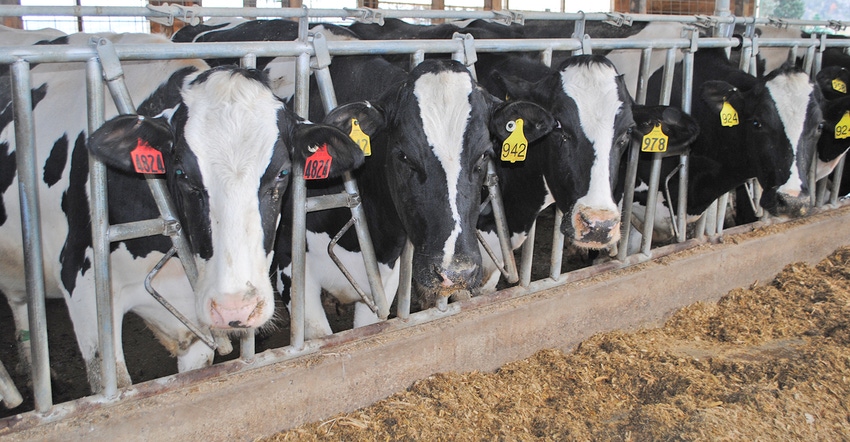
Favorable domestic sales, slower growth in milk production and higher dairy exports have pushed September milk prices higher than they were in August, according to Bob Cropp, University of Wisconsin-Madison dairy economist.
Moving in right direction
“Higher cheese and dry whey prices will push the September Class III price to around $16 compared to $14.95 in August,” Cropp says. The Class III price bottomed out in February at $13.40.
Cropp says fluid milk sales continue to trend lower.
“Fluid milk sales from January through July were 2.2% lower than a year ago,” he notes. “But with butter and cheese sales running higher, total domestic sales of milk and dairy products for September will be higher than a year ago and are positive for milk prices.”
August milk production is 1.4% higher than a year ago, according to USDA. Milk cow numbers fell by 9,000 head from June to July but regained 5,000 head in August.
August cow numbers were down slightly from a year ago, but milk per cow is 1.4% higher than a year ago and resulted in the 1.4% increase in total milk production.
“This higher-than-expected increase in August milk production could dampen milk prices some,” Cropp says, “but schools are now in session, moving more milk to fluid use and less for cheese production. The fact that the sales of butter and cheese improve seasonally during the Thanksgiving to Christmas period is still positive for milk prices.”
Cropp says tariffs imposed by Mexico and China on the U.S. in July are having some impact on dairy exports.
“It appears that Mexico in anticipation of their 25% tariff on U.S. cheese increased cheese imports from the U.S. by 43% in June compared to a year ago because July imports were 1% lower than a year ago,” Cropp explains.
“July cheese exports to China dropped 56% from a year ago with whey exports down 8%,” he says. “While the volume of dairy exports in July were the lowest since January, they remained above a year ago due to continued strong exports of nonfat dry milk to Mexico and higher exports of dairy products to other international customers.
Cropp says compared to a year ago, July exports of nonfat dry milk and skim milk powder were 30% higher, cheese was 1% higher, butterfat 84% higher and lactose 15% higher.
“On a total milk solids basis, July exports were equivalent to 15% of U.S. milk production, bringing the year-to-date to 16.6% of U.S. milk production,” Cropp says.
Trade war impact
How tariffs impact U.S. dairy exports through the end of the year continues to bring uncertainty to future milk prices.
For the last quarter of the year, “domestic demand should continue to run above a year ago, and the growth in milk production may increase by no more than 1%,” he says. “Even if U.S. dairy exports show some more weakness, the Class III price could stay in the low $16s.”
Looking into 2019, Cropp says a continued relatively strong economy will be positive for domestic sales.
“The growth in milk production is likely to stay well below 2%,” he notes. “Milk cow numbers may show little or no increase. With lower feed prices, milk per cow may improve some.”
USDA is predicting just a 0.1% increase in cow numbers and a 1.4% increase in milk per cow, bringing the increase in total milk production to 1.5%.
“If tariffs remain, USDA is forecasting lower dairy exports but not falling to a level that will lower milk prices compared to 2018,” he says. In fact, USDA is forecasting that 2019 milk prices could average higher than 2018 prices. Cropp agrees.
“I think it is reasonable to assume milk prices will be higher in 2019,” he concludes. “The level of milk production and dairy exports will be major factors in how much higher.”
About the Author(s)
You May Also Like






